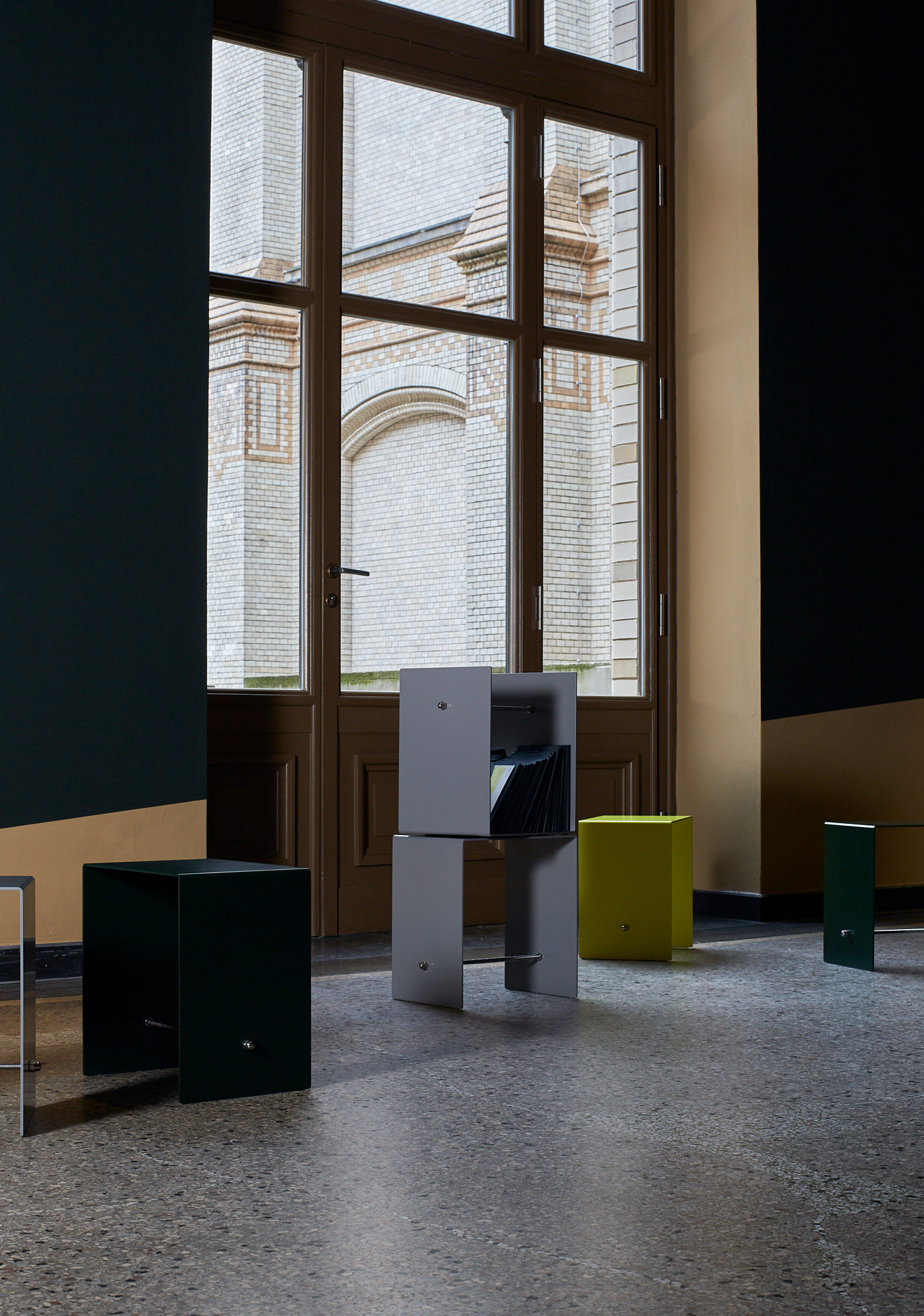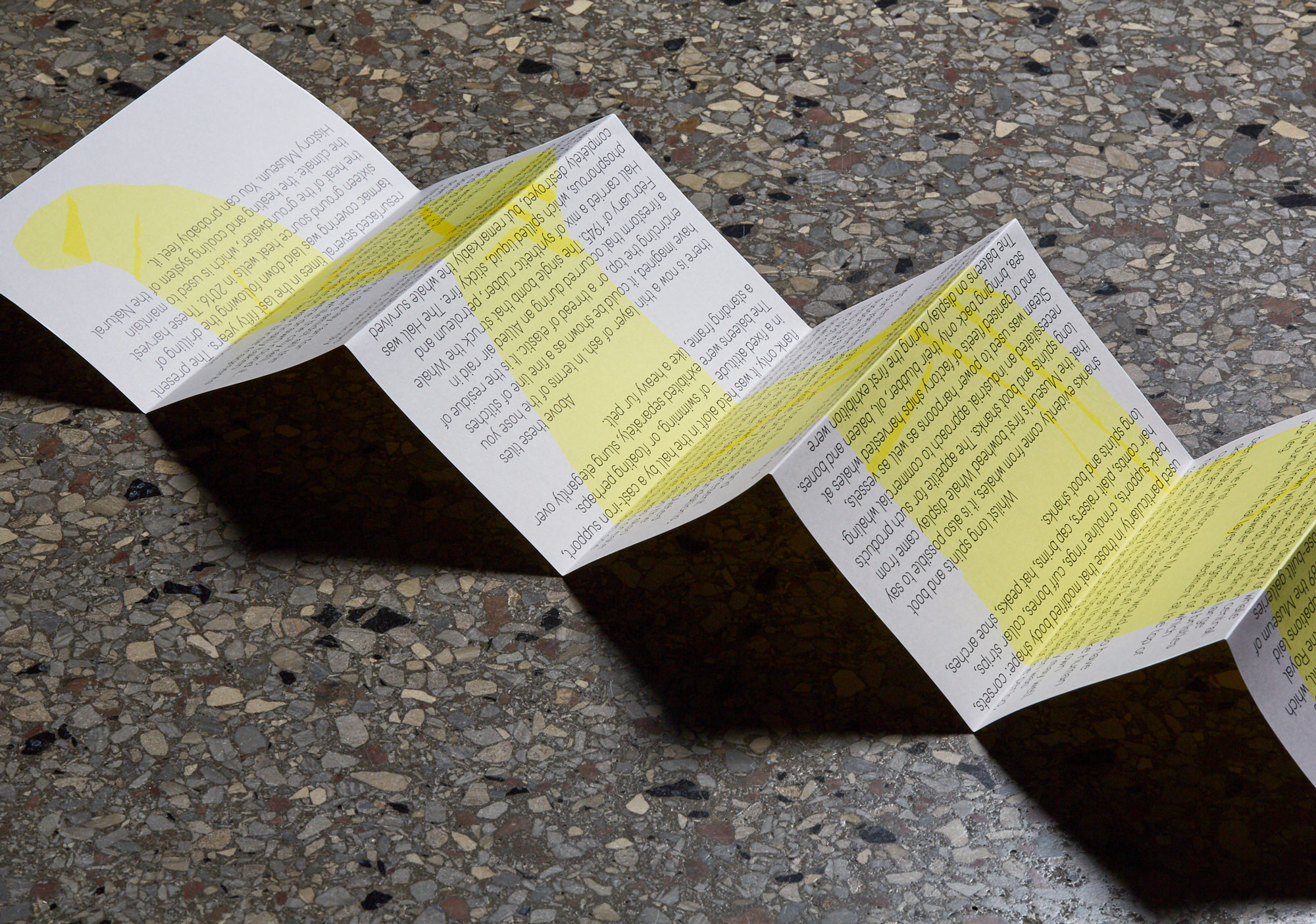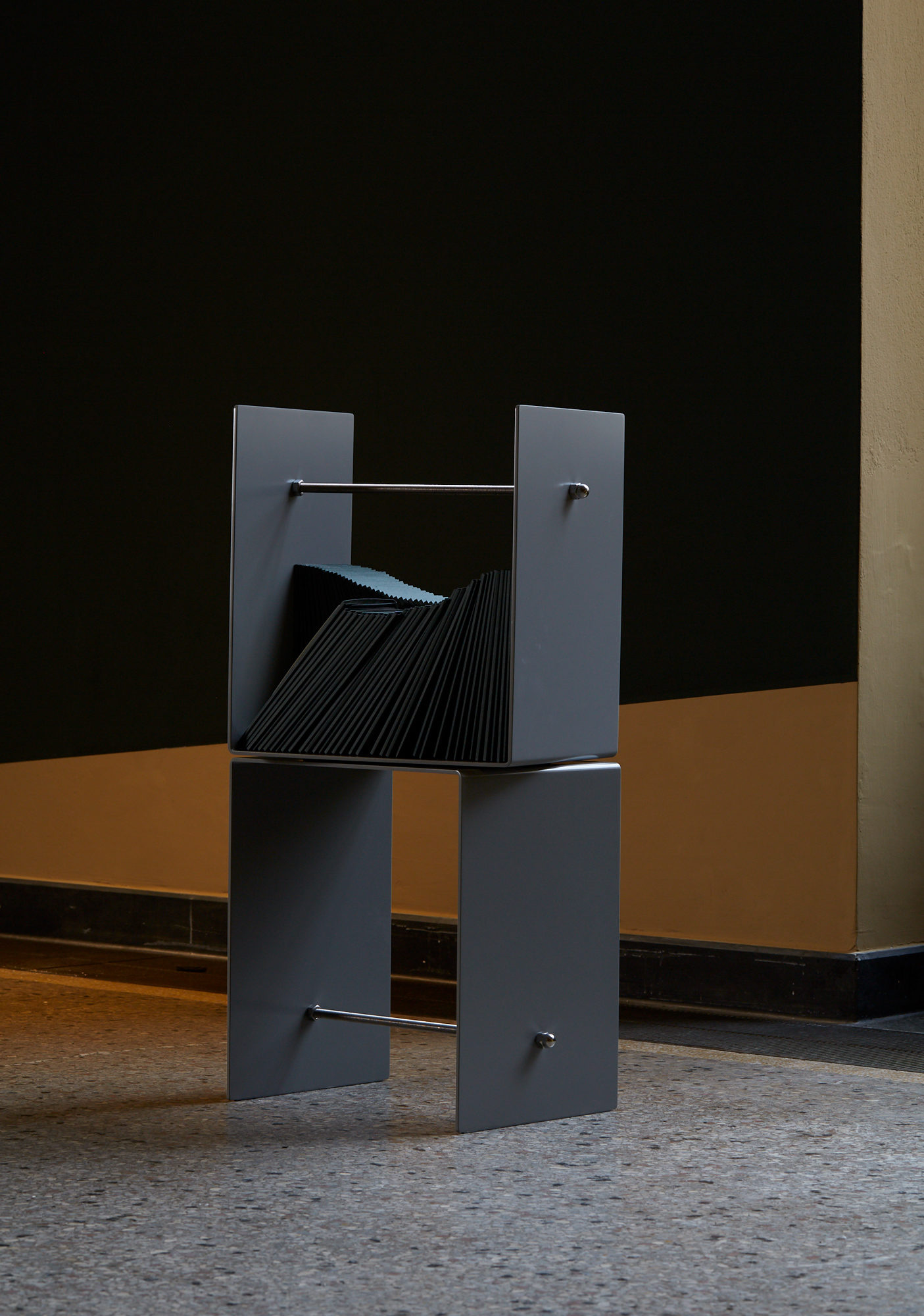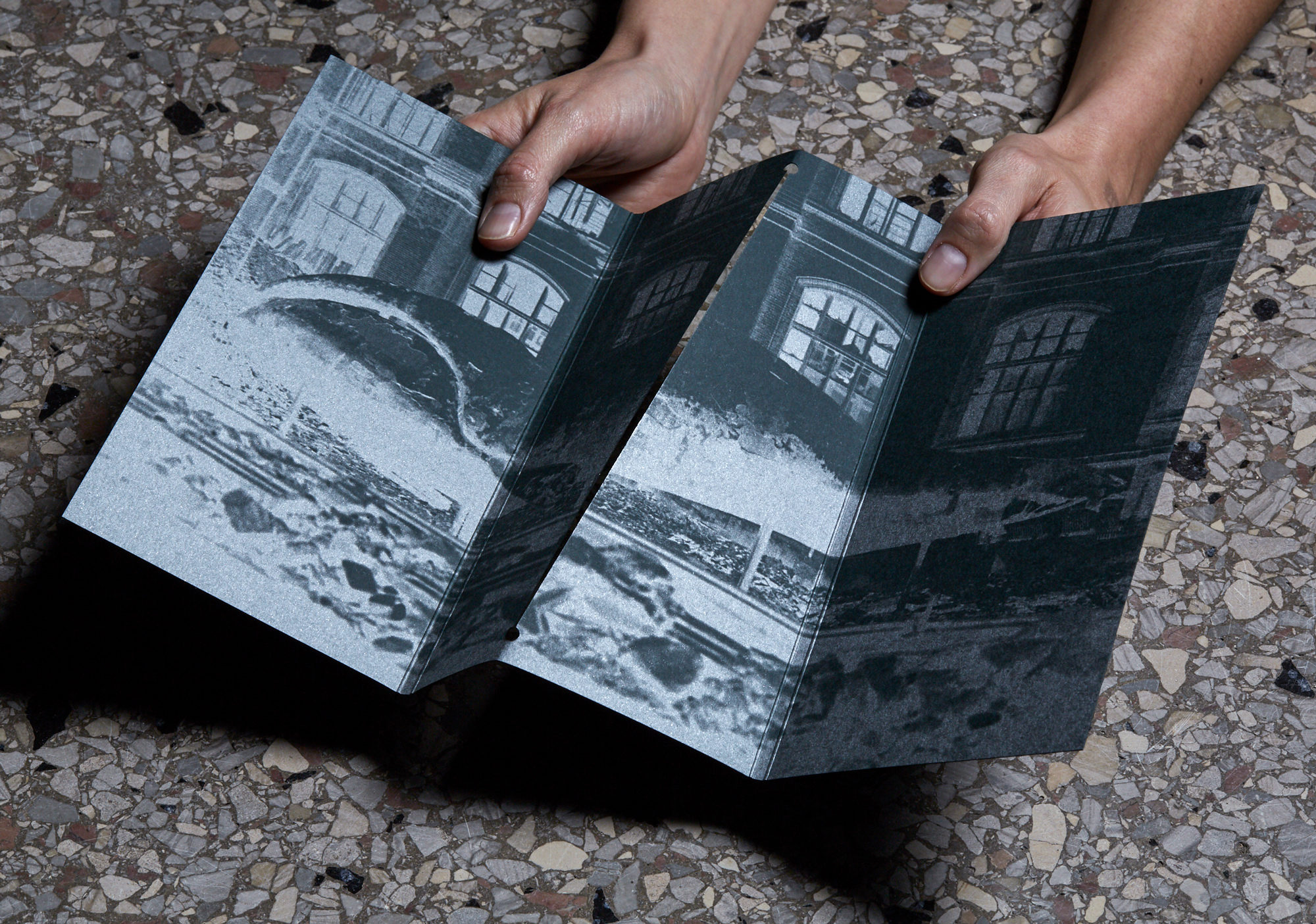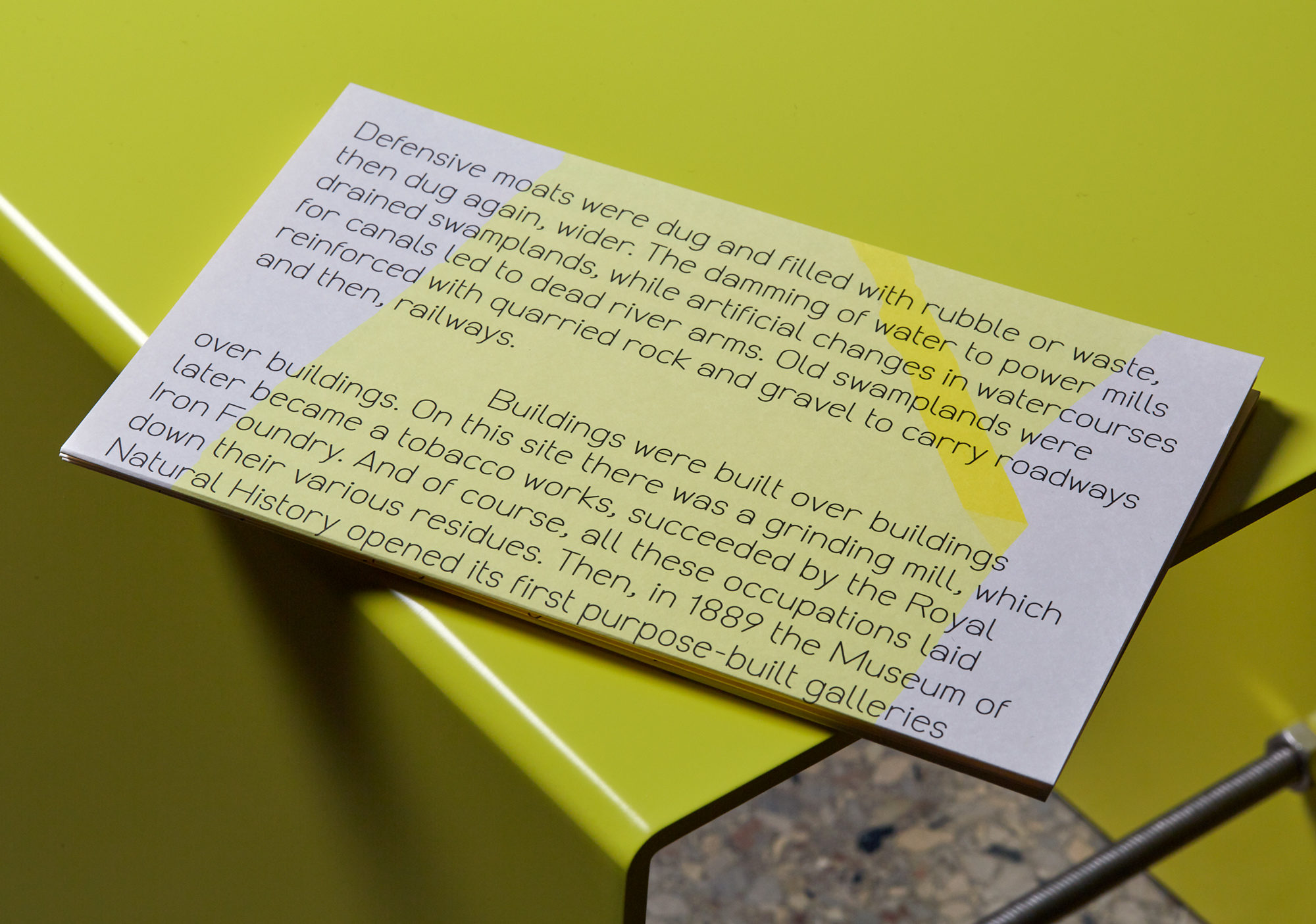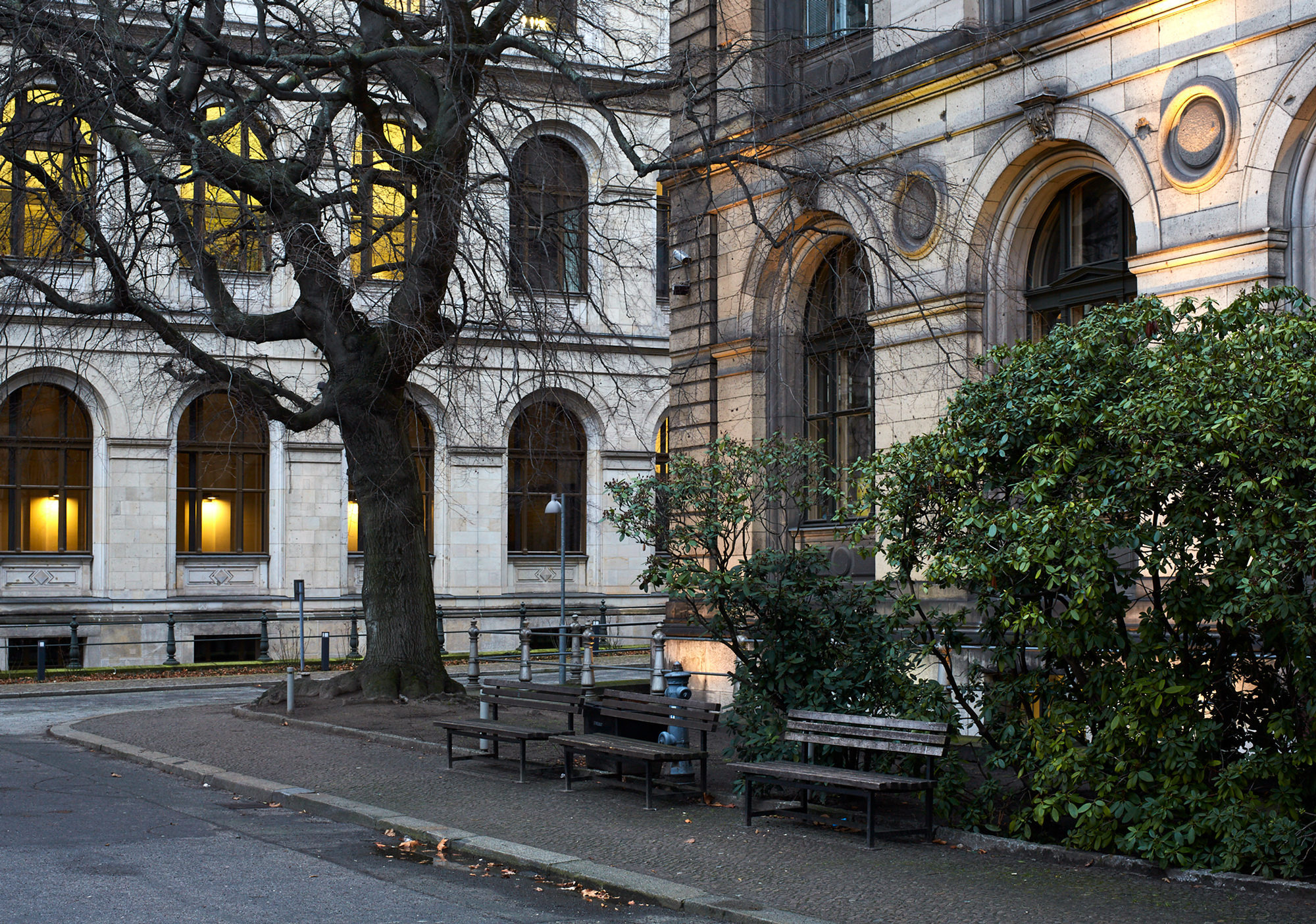We worked closely with Turner Prize-winning artist Elizabeth Price to realise her intervention at Berlin’s Museum of Natural History. BERLINWAL was part of a programme that invited artists to reflect on the museum’s collections, archive, history and role.
Elizabeth’s contribution focused on Courtyard 3, the former Whale Hall, which had been destroyed by a firestorm after Allied bombing in 1945. Her viewing area and wall graphic invited visitors to consider the geological strata beneath their feet and the time these strata embody, as well as the connections between the human, animal and built worlds. The accompanying text instructed readers to imagine themselves in possession of a giant stockinged leg, inserted in the ground, and to think about the circulation of warmth through the bodies of whales, people and buildings.
We gave Elizabeth’s text the physical form of a concertinaed booklet that unfurls vertically, like hosiery; at 90cm long, it is the same length as a human leg. This format meant that the type could be quite large and set as a single column. The font was derived from hand-stencilled labels we discovered in the museum’s archive, giving it a simultaneously personal and bureaucratic feel.
For the viewing area, we designed 16 powder-coated aluminium stools for the viewing area, based on furniture originally created in wood by Max Bill and Hans Gugelot for the Ulm School in 1954. Our colour scheme was inspired by institutional furniture: the stools were gunmetal grey, bottle green and sulphur yellow. The booklet was housed in a dark green folder, printed in silver and bearing an archival photograph of the whale. Elizabeth completed this set of tools for the visitor’s imagination with a large trapezium, placed on the wall looking out on to the courtyard, which communicated a sense of the absent whale’s enormous size.
